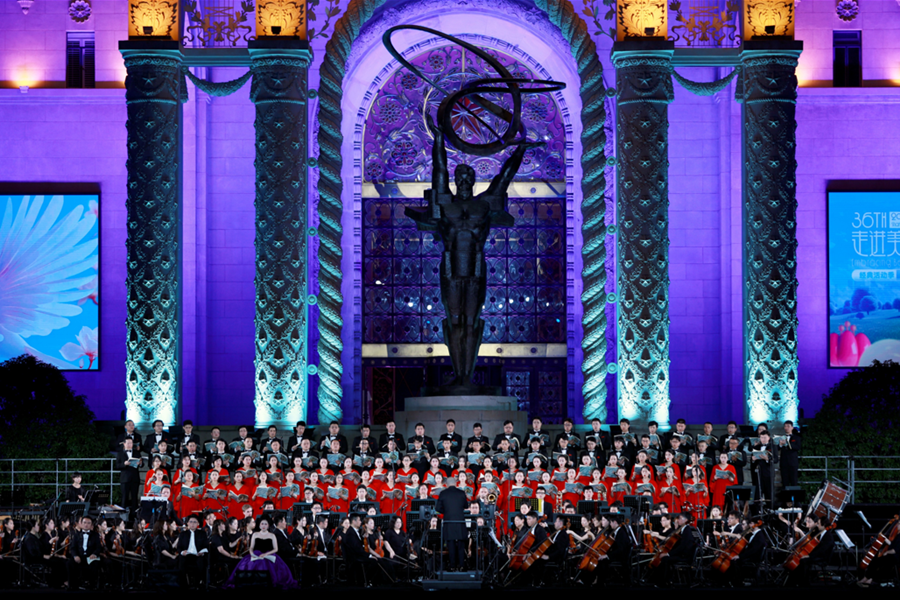Zhangma Scenic Area

A bird's-eye view of Zhangma Scenic Area. [Photo/WeChat account: shanghaitourism]
Located at the source of the Huangpu River, the mother river of Shanghai, Zhangma village in Qingpu district boasts excellent water quality and is designated as a national Class II water source protection zone.
The village covers an area of 3.12 square kilometers, with the Zhangma Scenic Area spanning 2.71 sq km.
The scenic area is characterized by small bridges, flowing water, picturesque scenery, and convenient water and land transportation. Crisscrossed with waterways, the region is nicknamed the "Pastoral Venice of the East".
It has preserved local intangible cultural heritages, such as Tian Shan Ge (Field Songs) and Yao Kuai Chuan (Rocking Fast Boat). Its Maota Pagoda was honored as one of the world's 100 historical lighthouses.
Field Songs (Tian Shan Ge)
Field Songs, also known as "singing while farming" or "rice-transplanting songs", are sung by farmers while weeding or planting rice, led by one person with others taking turns to sing.
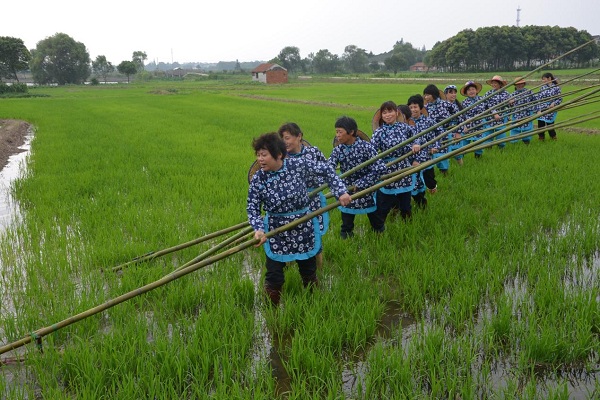
Local farmers sing while farming. [Photo/shqp.gov.cn]
The performance style is unique and distinctive, characterized by its different sections, namely, "head song", "front selling", "front howling", "long vocalizations", "back selling", "back howling", "chasing crows", and "resting voice". Due to the complexity of Field Songs, singing styles vary across districts and counties.
The lyrics mainly reflect the daily lives of local people, showcasing their labor, life, thoughts, and love, making Field Songs an important cultural medium for observing social life, customs, and traditions in Shanghai and surrounding rice-growing regions.
Field Songs have a long history. According to existing literature, the tradition of singing such folk songs in Shanghai was well established as early as the Ming Dynasty (1368-1644). By the late Qing Dynasty (1644-1911) and early Republic of China (1912-49) period, the creation and spread of Field Songs in Shanghai reached its peak.
However, starting from the 1960s and 1970s, with the promotion of modern agriculture and the enrichment of rural cultural entertainment forms, Field Songs gradually declined in Shanghai, particularly among the younger generation, although the tradition of singing these songs still persists among some elderly villagers.
Rocking Fast Boat (Yao Kuai Chuan)
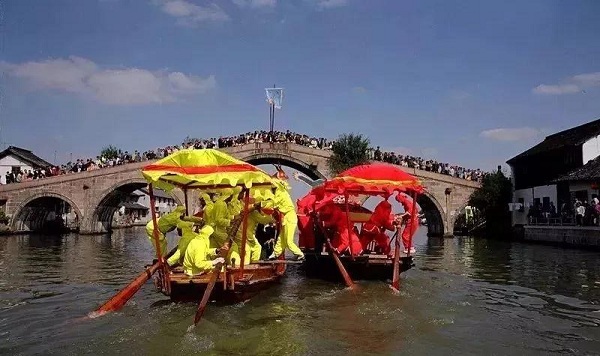
Two Rocking Fast Boats in Zhujiajiao town in Qingpu district. [Photo/ WeChat account: shanghaitiyu]
The Rocking Fast Boat is a folk custom with a history of over 300 years. It's a kind of recreational water sports performance that takes place on fast boats.
The fast boats are modified farming boats, known as "pig boats", and weigh over five tons. They are adorned with colorful ribbons.
Each fast boat is operated by a crew of 23 people: five rowers on the large oars, four on the small oars, with two groups of nine rowers alternating between the two oars, four drummers, and one person on the head oar.
The drums and gongs on the boats resonate loudly, while the shores are crowded with cheering spectators, creating a spectacular and lively scene.
"Rocking Fast Boat" performances are deeply cherished by the local community and are an important part of the cultural life of the water town of Zhujiajiao in Qingpu district.
Each performance lasts from early morning until noon, bringing joy and excitement. For over 300 years, the custom of "Rocking Fast Boats" has been closely linked to the economic, cultural, and social development of the local area.
In 2007, Qingpu's "Rocking Fast Boat" was included in the municipal list of intangible cultural heritage.
Maota Pagoda
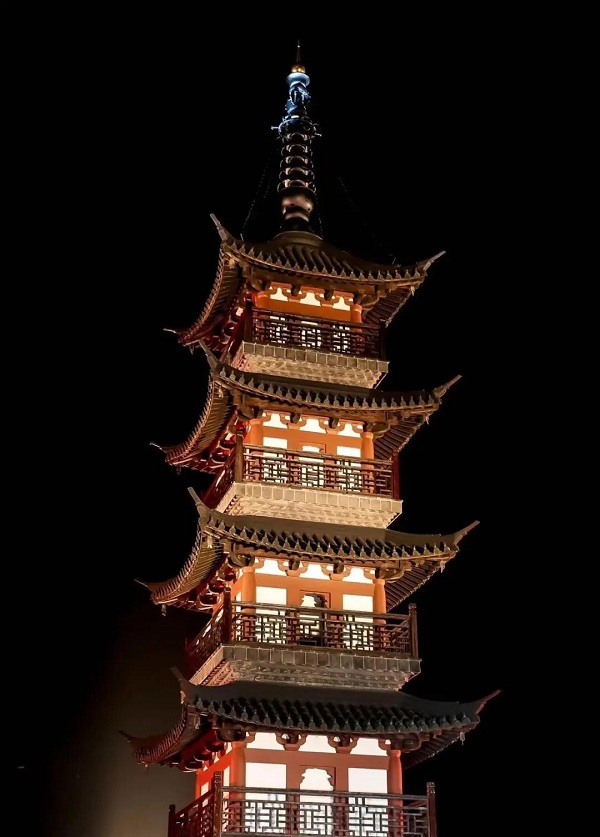
Maota Pagoda. [Photo/WeChat account: shanghaitourism]
Dating from the Tang Dynasty (618-907), the Maota Pagoda is a five-story Buddhist pagoda standing 28.2 meters tall, with its main body reaching 20.6 m. Built primarily with bricks and wood, this pagoda boasts a history of over 1,100 years.
In addition to its religious function, the pagoda served as a lighthouse at night, guiding ships. It has attracted numerous scholars and poets over the centuries, inspiring the creation of many poems.
In 1997, the Maota Pagoda was recognized as a world navigation mark legacy by the International Association of Marine Aids to Navigation and Lighthouse Authorities. Alongside four other lighthouses in China, it was honored as one of the world's 100 historical lighthouses, commemorated on stamps.
Footpath
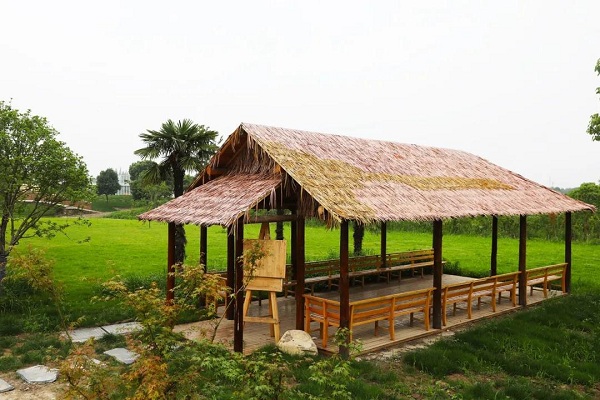
The footpath. [Photo/WeChat account: wenhuaqingpu]
Within Zhangma village, there is a 173-meter-long footpath in the field, with a total area of 800 sq m. The path is flanked by 18 North American crabapple trees, with resting wooden benches placed in the center.
This footpath serves as a link between the visitor center and the village committee with the scenic area, allowing visitors to immerse themselves in the rural landscape and enjoy the beauty of the farmland.
Zhangma Station
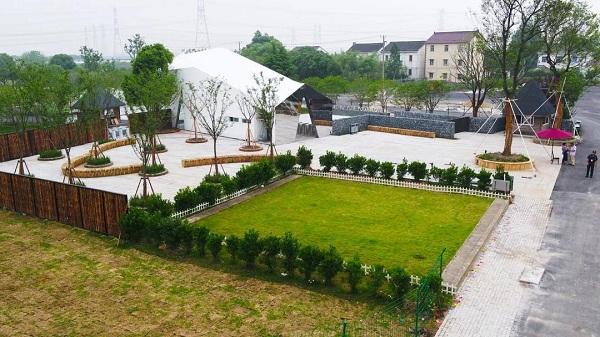
Zhangma Station. [Photo/WeChat account: wenhuaqingpu]
At the intersection of Shentai Road and Xunmengyuan Road, the new Zhangma Station has been built. It is located close to a bus stop and covers an area of about 100 sq m.
The station includes public toilets, convenience stores, and public bicycles. Visitors can rest, enjoy the scenery and wait for the bus here. It offers services such as tourism consultation, free water, and small change exchange.
Address: No 2119 Shentai Road, Zhujiajiao town, Qingpu district
(Updated on Oct 24, 2025)
Sources: "wenhuaqingpu", "shanghaitourism", "shanghaitiyu" WeChat accounts; shqp.gov.cn
Editor's Pick
FAQs
- What if my passport expires but my Chinese visa is still valid?
- Can pets and owners depart from different countries while complying with customs regulations?
- Can a minor travel to China and stay in a hotel without a parent's presence?
- Who is eligible for the 240-hour visa-free transit policy in China?
